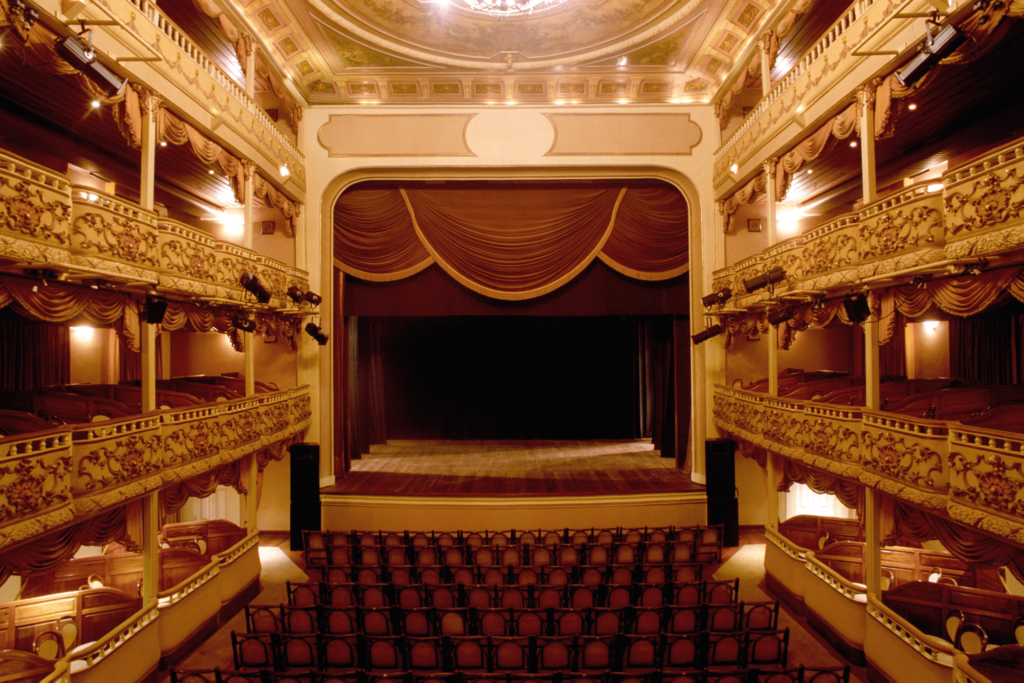
Theatre Architecture: How It’s Changed Over Time
As we near pantomime season, more and more people rekindle their love with all that theatres have to offer. Campaigns to save these venues have been long running, with a lack of people supporting them throughout the summer months. Here at Munday + Cramer, however, we believe there is something to be admired about theatre architecture in particular. Afterall, there is a lot that goes into making these locations look and feel as special and authentic as they do!
How It All Started
Theatres were first introduced by the Romans who took inspiration from ancient Greece. Initially built from wood, these structures were typically circular and open-air. Stone soon became the building material of choice due to the risk of natural disasters such as fires. Performances also took place during the daylight due to the lack of electricity and the lighting technology we are used to today.
After Charles I was executed in 1642, however, many theatres were demolished as performances were outlawed. It was believed that these would threaten the peace. Twenty years later, the monarchy was restored and theatres were rebuilt due to a surge in interest.
There is plenty more history to unpack beyond this, which you can read more about here.
How Theatre Architecture Has Changed
As you can imagine, theatre design has changed drastically throughout the years. Not only are we now much more technologically advanced, but we’re also a lot more environmentally conscious too.
Fast forward to 2023 and technology is used in almost every stage of theatre. From audio and lighting systems to set design and costumes, tech has completely changed the way the industry operates.
When building, expanding, or renovating any theatre, there is a lot to consider. Not only do you need to get the ambience spot on, but you also need to think about space optimisation and acoustics too. Any credible theatre architect will give thought to all of these aspects and the many more.
Theatres in the UK
It’s estimated that there are over 1,100 theatres in the UK that are in active use today. Many of these are well-known, admired buildings usually placed within the heart of a city. Below, we’ve listed a few of our personal favourites…
Theatre Royal, Bath
Built in 1805, the Theatre Royal in Bath is a grade II* listed building. It has a capacity of 900 people and was originally built to replace the Old Orchard Street Theatre. It was built in the Georgian architecture style.
Cliffs Pavilion, Southend
We of course had to give mention to a local theatre to us, the Cliffs Pavilion in Southend. Construction began in the 1930’s for the 500-seat theatre however due to World War II, construction was halted. As such, the building wasn’t opened to the public until much later, in 1964. The building embraces the Art Deco style and underwent a refurbishment in 1991-1992.
Royal Exchange, Manchester
The Royal Exchange is an iconic building, located in the centre of Manchester. The theatre encompasses the Classical architecture style, with elements of Baroque. Construction started in 1867 and finished in 1921, however the Manchester Blitz and bombing in 1996 caused significant damage to the Grade II listed building.
Contact Us
In the process of refurbishing a performance venue? Why not reach out to our theatre architecture experts? For more information about our services and costs, get in touch with our team today. You can email us by clicking here. Alternatively, give us a call directly on 01245 326 200.
